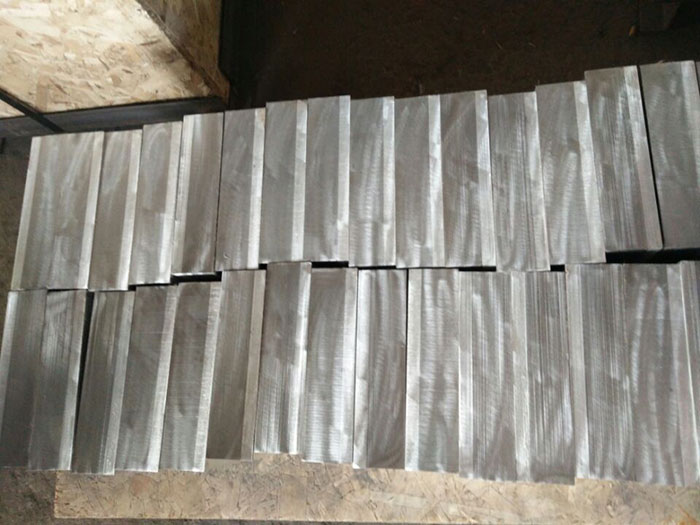The aluminum superstructure of the steel-aluminum hybrid ship is connected with the steel deck. In the past, the riveting method was mainly adopted. With the development of technology, the
aluminum-steel composite transition joint gradually became the preferred connection method for the aluminum superstructure and the steel hull. . Aluminum-steel composites are usually composed of three layers, and three materials with different melting points and large differences in properties are welded together by means of explosion welding. Explosive welding allows these three materials to form an atomic bond with very high strength. The
steel-aluminum transition joint is used to improve the manufacturing cycle and construction quality of the steel-aluminum hybrid ship. On the steel-aluminum hybrid ship, only the steel surface of the aluminum steel strip is welded by the steel deck, and the aluminum surface of the aluminum superstructure is welded with the aluminum steel strip. The hull is watertight, airtight, corrosion resistant and easy to maintain.
 Aluminum-steel transition joint
Aluminum-steel transition joint were originally used in European countries and Japan. China began basic research and development in the 1980s and was officially put into use in 1993. The a
luminum-steel transition joint currently used are mainly composed of aluminum/aluminum/steel (the thickness of the steel plate is 25 mm, the thickness of the aluminum transition layer is 13 mm), and the material combination is 5083 1060 CCSB. The general standards for domestic shipbuilding of
aluminum-aluminum steel composite joints are as follows: shear strength 55MPa, tensile strength 80MPa. The mechanical properties of our company's products can generally reach the following values: shear strength 75~85MPa, tensile strength 100MPa (refer to standard MIL-J-24445A-1997). The standard requirements of
aluminum-titanium steel are as follows: shear strength 80 MPa; tensile strength 137 MPa; and in actual production, the following values can usually be achieved: shear strength 120 MPa, tensile strength 160 MPa (refer to standard CB1343-96) ).
